
In 2015 Wallpaper* celebrated its 200th issue with the Power 200 list. Included on the roster, which pinpointed 200 of the world’s most influential design names, was French designer Dorothée Meilichzon.
In almost a decade since, Meilichzon – who founded her Paris-based studio and agency Chzon in 2009 at the age of 27 – and her practice (which specialises in interior design for hospitality spaces) has continued to flourish. Recent work includes the Gran Hotel Montesol in Ibiza, two of Jackson Boxer’s UK-based restaurants, Henri and Cowley at Cowley Manor, and the Terminal 2G departure lounge at Charles de Gaulle airport, which was created to relieve the monotony of waiting for a flight.
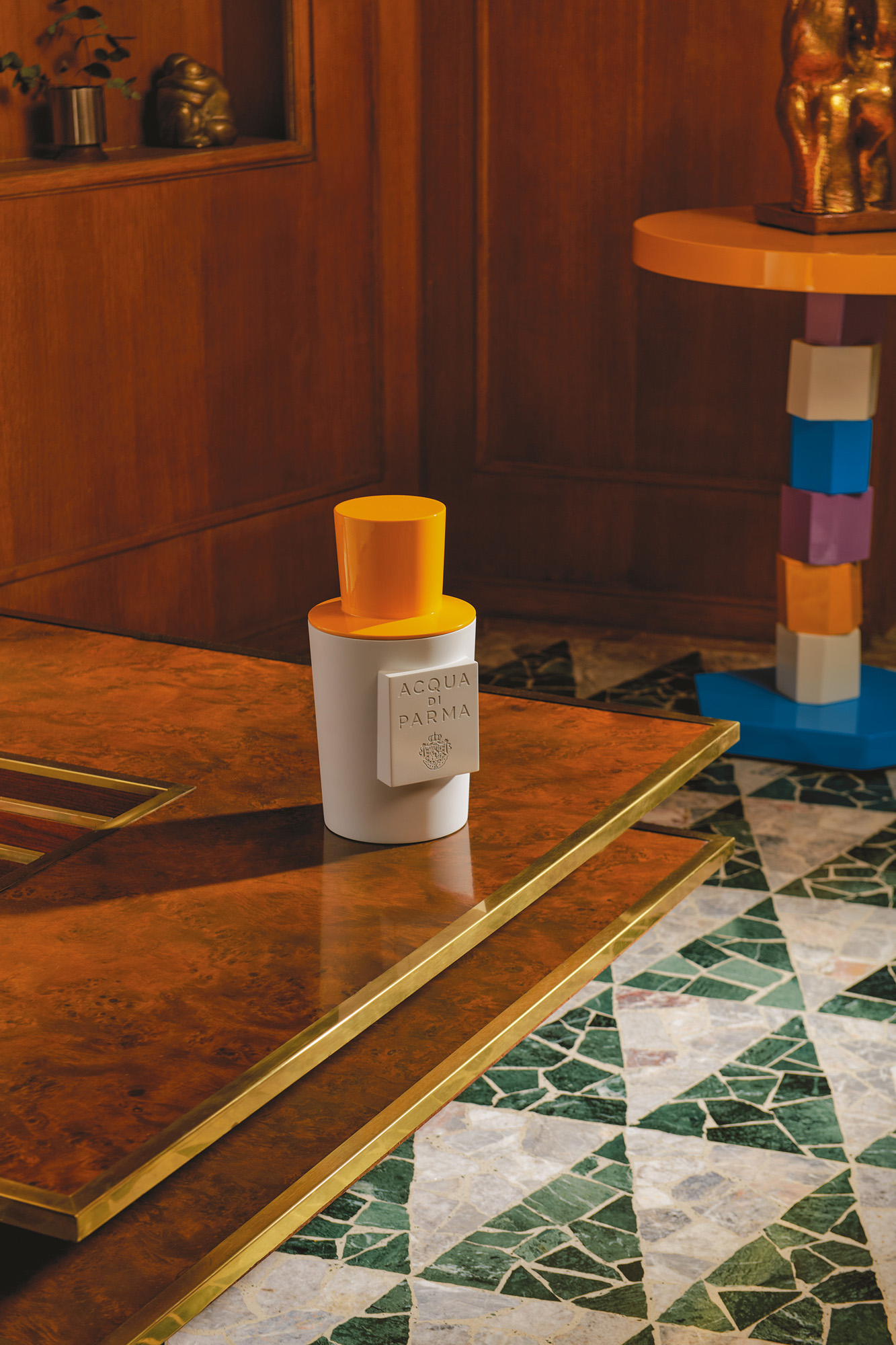
Dorothée Meilichzon on her collaboration with Acqua di Parma
This year (2024) marks the start of a new venture for Meilichzon; her first-ever brand collaboration. Luxury Italian fragrance house Acqua di Parma (which requires little introduction, such is its iconic status) nabbed her talent for a special project in South Korea, a café in Seoul’s Lotte Tower Mall bedecked in joyous, Acqua di Parma yellow. Just last month, Meilichzon dreamt up a multisensory summer pop-up for the brand in St Tropez.
But it was back in April, on a grey London afternoon that was in desperate need of a serotonin boost in the form of Italian sunshine, that I met with Meilichzon and Acqua di Parma’s CEO Giulio Bergamaschi at Claridge's. The pair were in town discussing the next chapter of their work together. This was revealed as the ‘Chapeau!’, an impressive two-in-one ceramic candle, weighing almost 2,000g in total and drawing inspiration from the art deco fragrance bottles emblematic to the house.
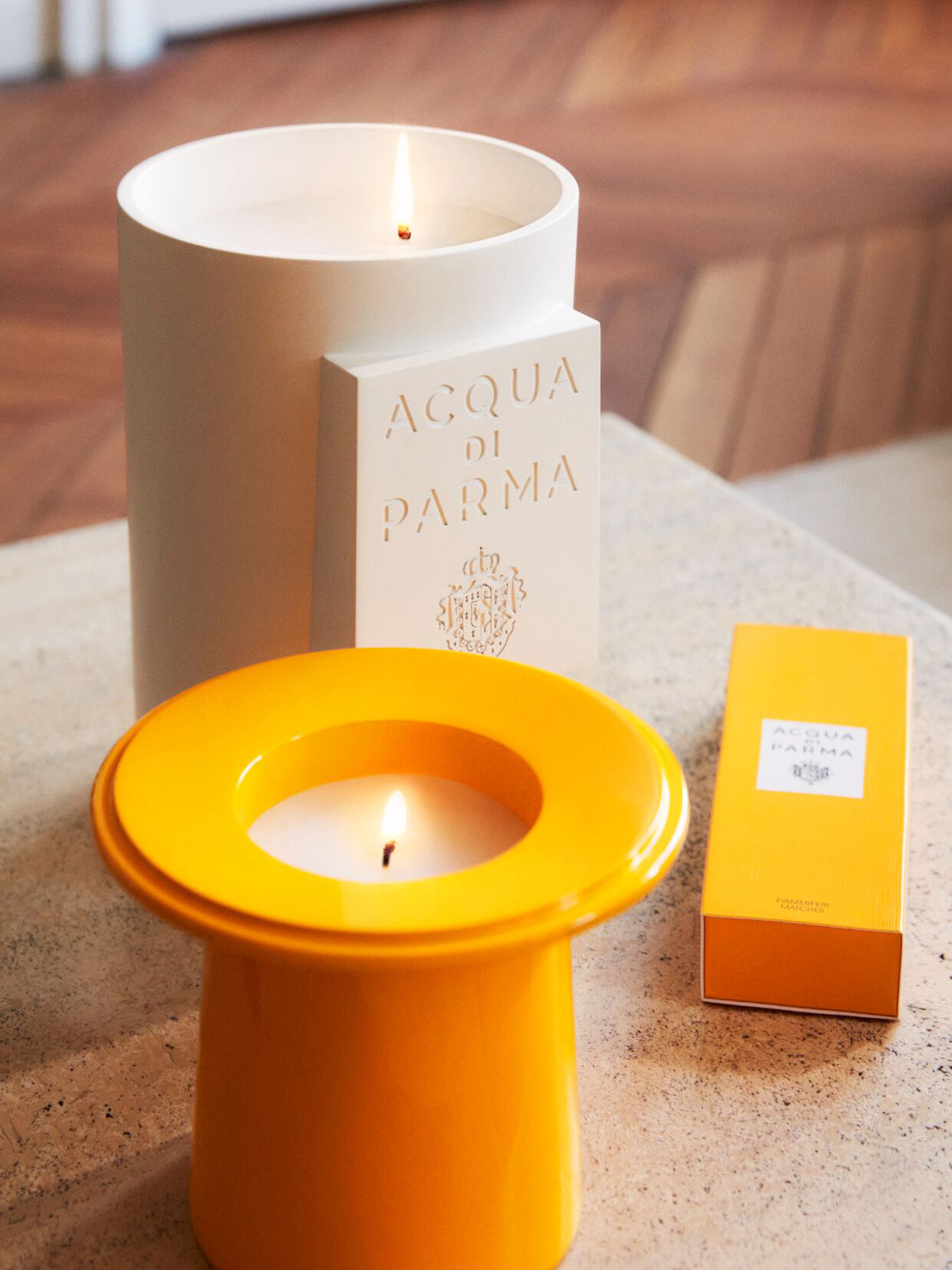
‘It’s funny because I believe Dorothée and I met probably around 20 years ago now. I was living in Paris and Dorothée is from Paris. But then we both took two different paths and careers,’ Bergamaschi says. ‘After my appointment at Acqua di Parma, I immediately thought of her as a designer whose work I admired, and who I would love to collaborate with the brand. Her distinctive style is sophisticated, elegant. But at the same time, colourful and playful, which is exactly the DNA of Acqua di Parma.’
Bergamaschi wasted little time in contacting Meilichzon to gauge her interest. ‘Of course, I said yes!’ says Meilichzon, with a laugh.
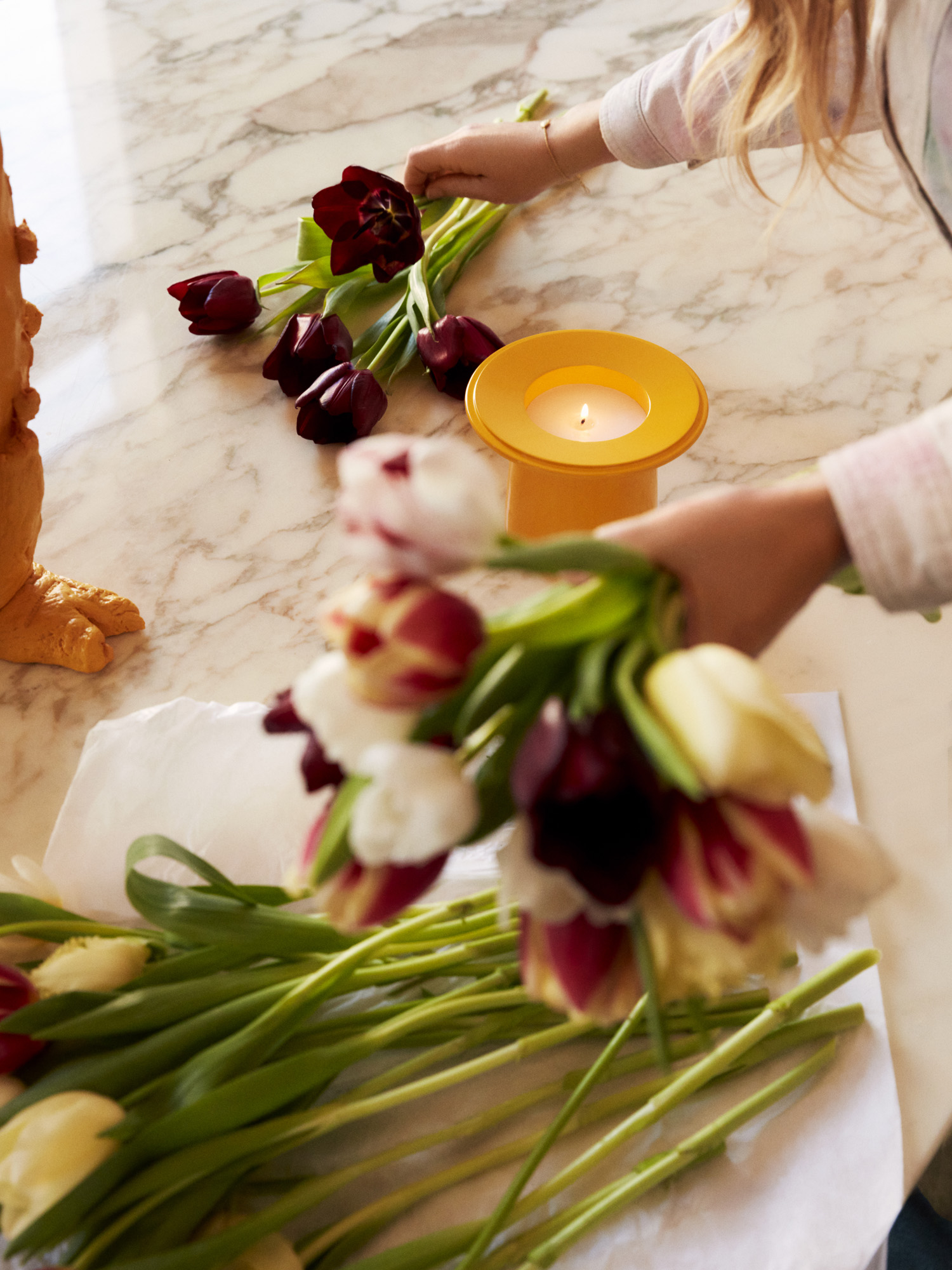
Scented with Luce di Colonia, a fragrance that brings the notes of Acqua di Parma’s signature Colonia into the home, the ‘Chapeau!’ is named in tribute to the Acqua di Parma boxes, which were originally hat boxes sold by tailors who popularised the brand with their high-end clientele in the 1930s.
‘The work we’re doing with Acqua di Parma plays a lot on contrast: contrast of materials, contrast of colours,’ says Meilichzon. ‘That’s what we do most of the time in our work. We play with different shapes and those that are perhaps not made to be together. So the candle is two in one; the top, which you can remove to reveal a smaller candle is glossy, in signature yellow or blue glaze. The bottom is a white biscuit ceramic, which is matte. It creates a tension.’
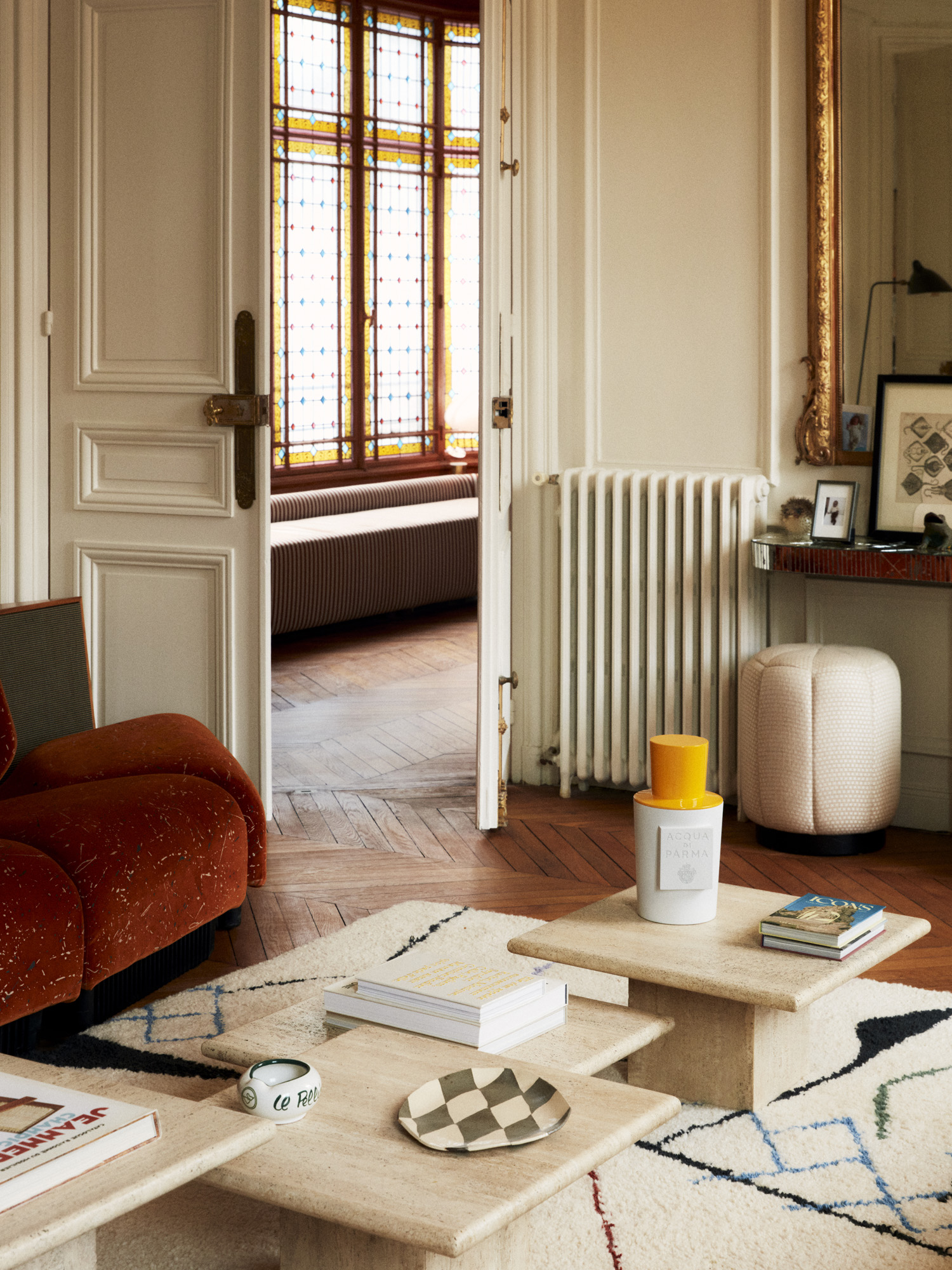
The triad between craft, design and lifestyle is something that Bergamaschi is keen to bring into sharper focus at Acqua di Parma as CEO. ‘I strongly believe that the future of Acqua di Parma is not only fragrance but also the art of living,’ he says. ‘In general, we are going to further elevate the brand by working with smaller artisans, masterful hands, and those who experiment.’
Before heading back out into Mayfair’s gloom, I press the pair a little to reveal what else they might have up their citrus-scented sleeves when it comes to home fragrance and lifestyle objects. But both remained tight-lipped. ‘You're going to see more,’ says Bergamaschi. ‘There is a mutual understanding of the Acqua di Parma DNA between Dorothée and the brand.’
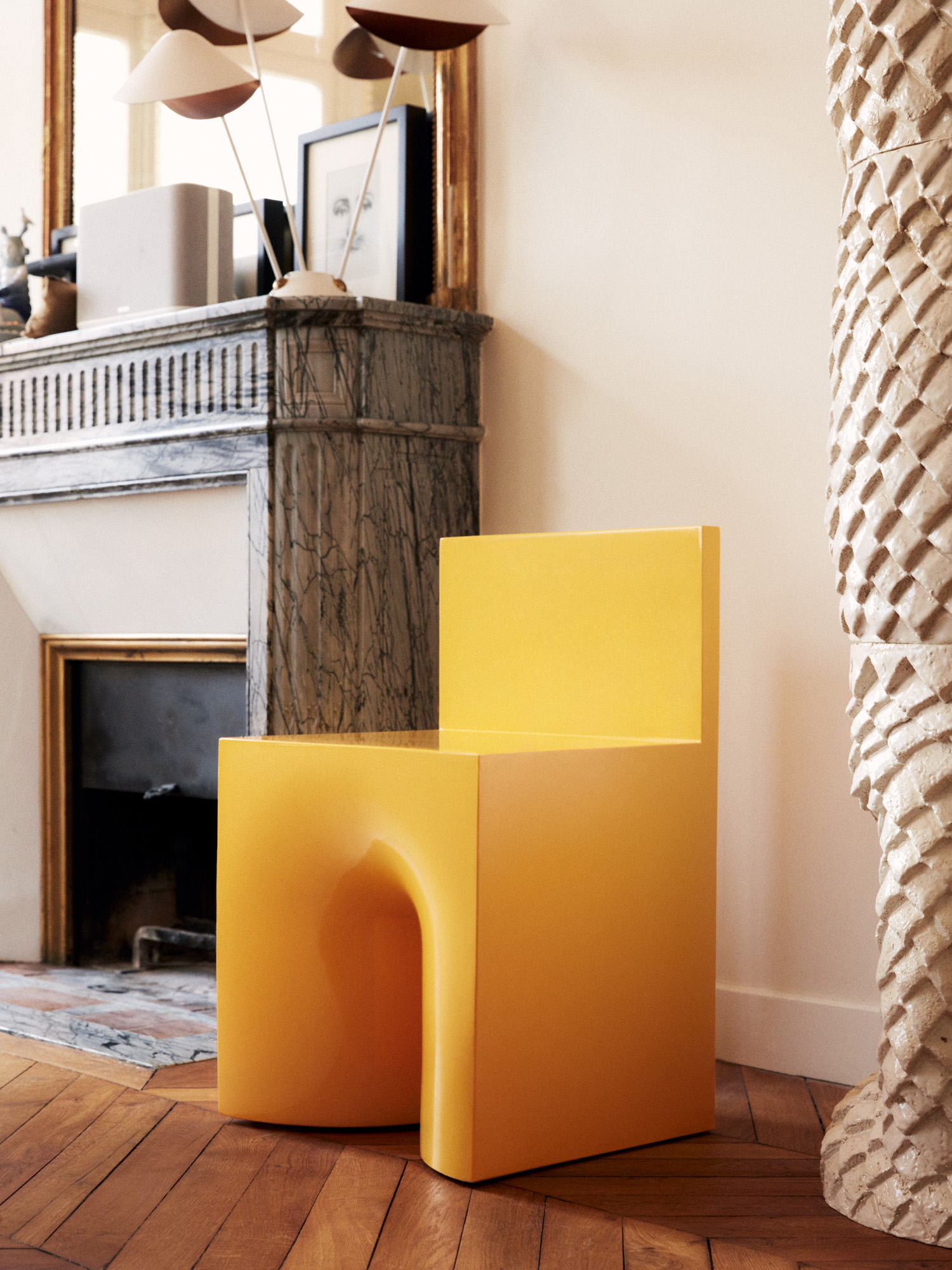
‘Although this was mine and my team’s first time working with a brand, because it was Acqua di Parma, it didn’t feel unnatural,’ says Meilichzon. ‘We work a lot in old cities, so we know how to understand something historical and to turn it into something new; whether that is by adding colours, by experimenting with new materials, or shapes. And this is the same with Aqua di Parma: it’s classic, but not afraid to be playful.’






